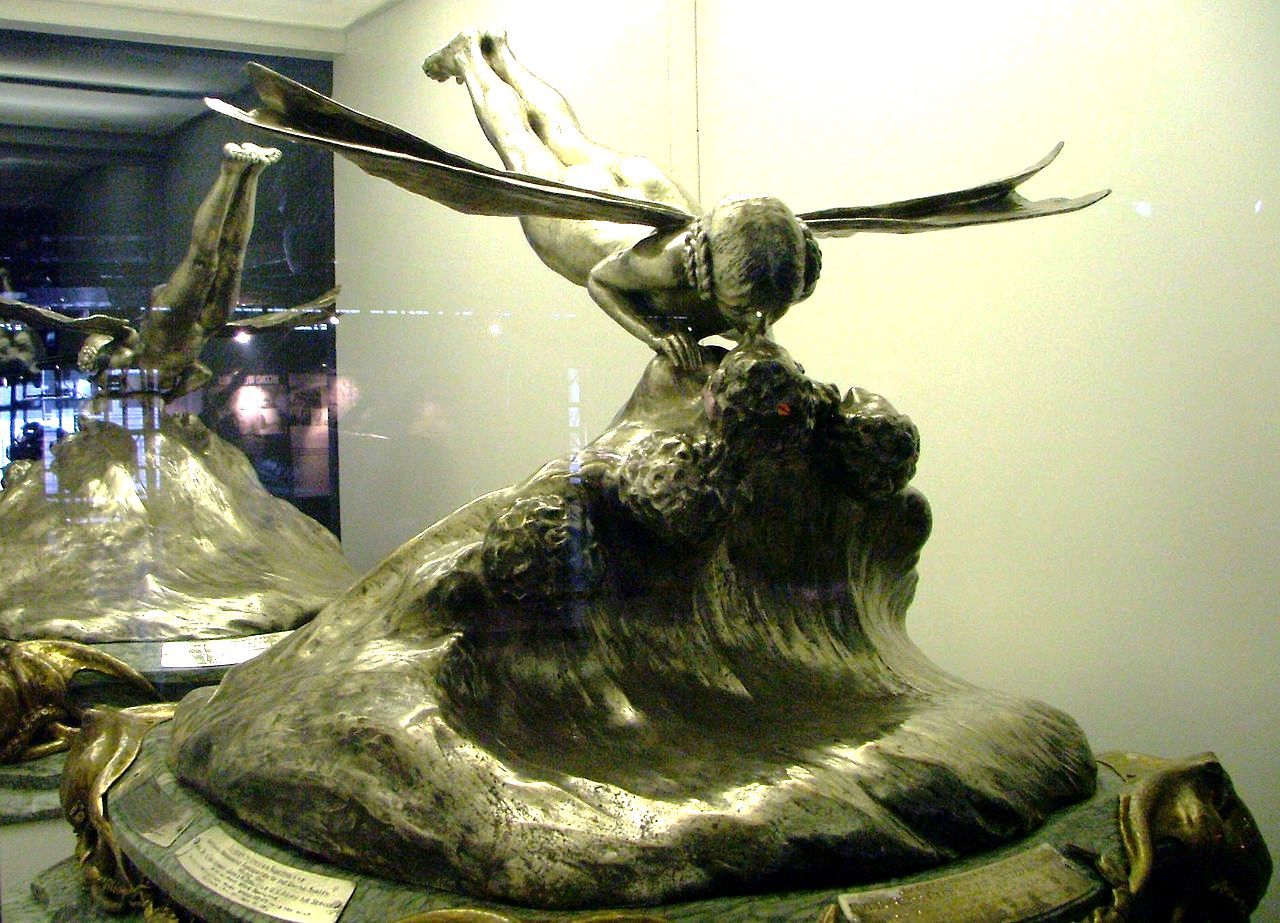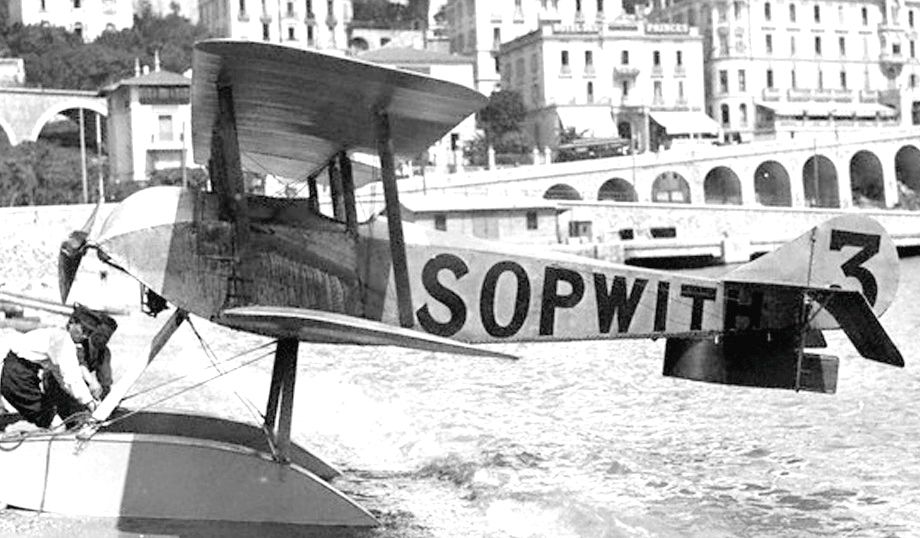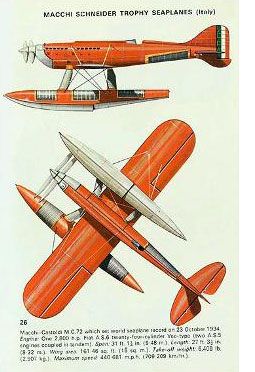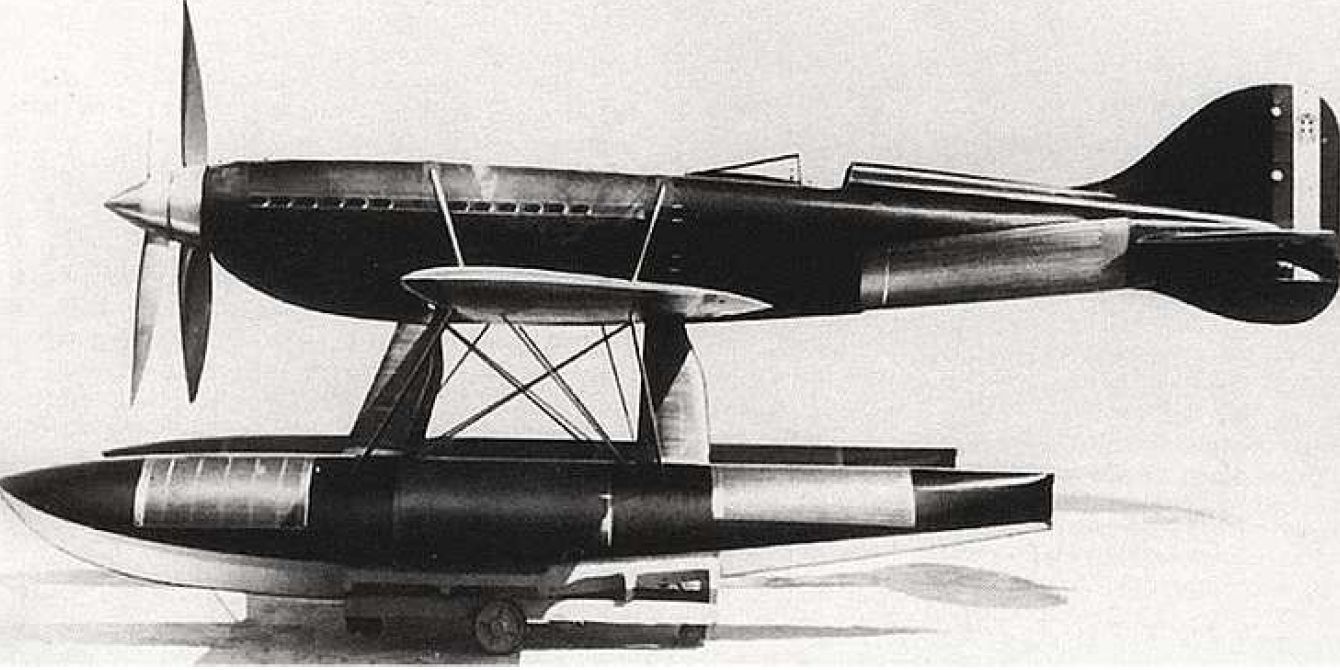Model of the month January 2021 Macchi-Castoldi
Macchi-Castoldi M.C.72
For quite some time after the beginning of aviation, there was a performance competition for seaplanes. The first one took place in 1911 and was donated by the French industrialist Jaques Schneider. After Schneider it was called either Schneider Trophy or Schneider- Cup.
In 1913 it was won by the French plane Deperdussin Monocoque with 73,5 km/h in a triangular course of 280 km in Monaco, pilot was Marcel Prevost. In 1913 the British Sopwith Tabloid with Howard Pixton won, the speed was already close to 140 km/h, also in Monaco. The statutes stipulated that the next meeting should always take place in the country of the winner, but the World War intervened.
Die Sowith Tabloid, Winner 1913
And so there was never a chance of a German participation due to the lost war and its for the German aviation devastating dictum of the Versailles treaties (but for the same reasons gliding was invented here).
In the following interwar period, the competitions were resumed and were won sometimes by Italy, sometimes by the USA and of course by the British. In 1931, the last Cup was to be held, as the British had already won 3 times in a row with Supermarine aircraft.
And here the MC.72 comes into play, which was supposed to bring the victory to Italy. But there were technical problems that its designer, Mario Castoldi, could not successfully solve until 1932, when 3 out of 4 planes built had already crashed.
The M2 was a wire-rigged monoplane on 2 floats with a FIAT twin engine consisting of 2 water-cooled 12-cyl V-engines mounted one behind the other, each acting on a propeller. This unit first developed 1900 kW/2600 HP. later even 2282 kW/3100 HP.
With this over-bred racing aircraft, the Italian Francesco Agello took the world speed record to Italy in October 1934 over Lake Garda with 709.202 km/h. This also delighted Duce Mussolini and his people. This record lasted for a few years.
The record attempts for land aircraft ("Bendix Trophy") and seaplanes ("Schneider Trophy"), which were still separate at that time, neither Howard Hughes/USA with his Racer H-1 at 567 km/h in the fall of 1935 nor Messerschmitt in Germany with the Bf 109 V13 in November 1937 at 610 km/h achieved a surpassing of this record, but the world record for land aircraft. That happened then only with the German planes Heinkel He 100 in the spring of 1939 with 746 km/h and little later with the Messerschmitt Me 209 at the end of April with 755 km/h.
The comparison of these record planes following the MC.72 show that it was a matter of consistent drag reduction with series engines with about 1000 hp at the beginning, because the huge floats and the wire cowls of the Macchi needed, in order to produce this performance, twice the hp figure of the later winners.
Technical specifications:
Length 8.32 m, wingspan 9.48 m. Height 3.30 m, wing extension 6.3, empty weight 2800 kg, take-off weight 3025 kg, v / max 709.202 km / h. Engine see above.
You can also find out more about this type of aircraft in our aviation reference work.




